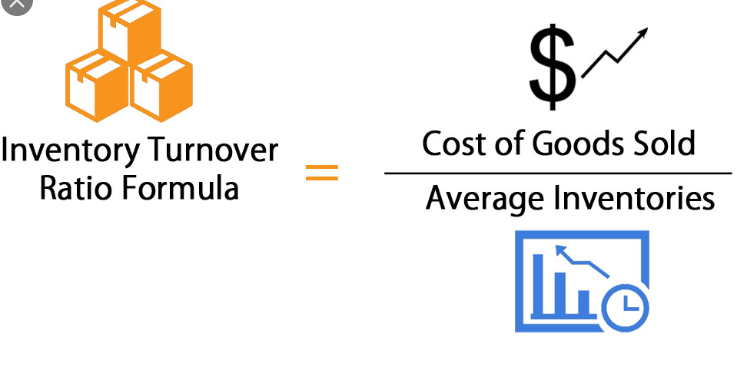Inventory turnover is a ratio that indicates how frequently a company sells its physical products during a given period. A company can divide the days in the period by the inventory turnover formula to calculate the days it takes to sell the inventory available.
The formula for Inventory Formula and Calculation
Inventory Turnover =Sales / Average Inventory
Where:
Average Inventory = (Beginning Inventory + Ending Inventory) / 2
Calculate inventory turnover by:
- Companies can calculate the average inventory, by dividing the sum of beginning inventory and ending inventory by two.
- Dividing sales by average inventory.
Companies can alternatively use the cost of goods sold (COGS) method instead of sales. Analysts divide COGS by average inventory instead of sales for greater accuracy in the inventory turnover calculation as the sales include a markup over cost. Dividing sales by average inventory inflates inventory turnover. In both situations, average inventory is used to help remove seasonality effects.

Why Inventory Turnover?
Inventory turnover measures how fast a company sells inventory and how analysts compare it to industry averages, how does this work?. Low turnover means weak sales and possibly excess inventory, also referred to as over-stocking. This may indicate a problem with the goods that are being offered for sale or come about as a result of too little marketing.
A high ratio indicates either a strong sales or insufficient inventory. If it is a sign of strong sales then it is a good sign for the business, but if it is insufficient inventory, it could lead to loss of business. Sometimes a low inventory turnover rate is a good thing, like when prices are expected to rise or when shortages are anticipated.
The speed at which a company can sell inventory is an indicator of business performance.
Another reason for examining inventory turnover is to compare a business with other businesses in the same industry. Companies are known to compare their operational efficiency depending upon if their inventory turnover is at par with, or surpasses, the average benchmark set per industry standards
Inventory turnover ratio is really important when it comes to perishable products like produce and fashion, which is a constantly changing trend.
Storing inventory costs money. This is because inventory that sits in a warehouse or anywhere else, does not generate income. Unsold inventory can invariably be obsolete and unsellable, which makes it a potential financial liability for a company
Inventory Turnover Ratio – Corporate Finance Institute
https://corporatefinanceinstitute.com › Resources
The inventory turnover ratio formula is equal to the cost of goods sold divided by total or average inventory to show how many times inventory is “turned”
Inventory Turnover – Corporate Finance Institute
https://corporatefinanceinstitute.com › … › Finance
You can calculate the inventory turnover ratio by dividing the inventory days ratio by 365 and flipping the ratio. In this example, inventory turnover ratio = 1 …
inventory turnover formula in 3 steps – TradeGecko
https://www.tradegecko.com › inventory-management
Inventory turnover is a ratio that measures the number of times inventory is sold or consumed in a given time period. Also known as inventory turns, stock turn, …
Inventory Turnover Ratio Defined: Formula, Tips, & Examples
https://www.netsuite.com › … › Inventory Management
The inventory turnover ratio is calculated by dividing the cost of goods by average inventory for the same period. A higher ratio tends to point …
Limitations of Using Inventory Turnover
When comparing or projecting inventory turnover, it is best to compare similar products and businesses.
Manipulating inventory turnover with discounts or closeouts is another consideration and this can significantly cut into return on investment as well as profitability.
Inventory Turnover Optimization Techniques
Here are some strategies a business can adopt to improve its inventory turnover ratio:
- Define inventory groups using a medium that will be useful to your business to enable get better placed to analyze, understand, and react to inventory that theoretically should behave similarly.
- Review and do away with stagnant inventory to avoid it from occupying valuable warehouse space.
- Consciously work at increasing demand for inventory via a targeted, well-designed, and cost-appropriate marketing campaign.
- Go through the business’s pricing strategy and critically find out what will lead to an overall increase in sales value.
- It will is best to review regularly purchase prices with suppliers and ask for discounts while requesting a quote or placing orders.
- Deeply analyze and understand your best selling products and stock inventory that sells.
- The forecasting accuracy can be improved by grouping inventory and monitoring trends.
- Encourage clients to pre-order products, to enable your business to plan inventory purchases.


